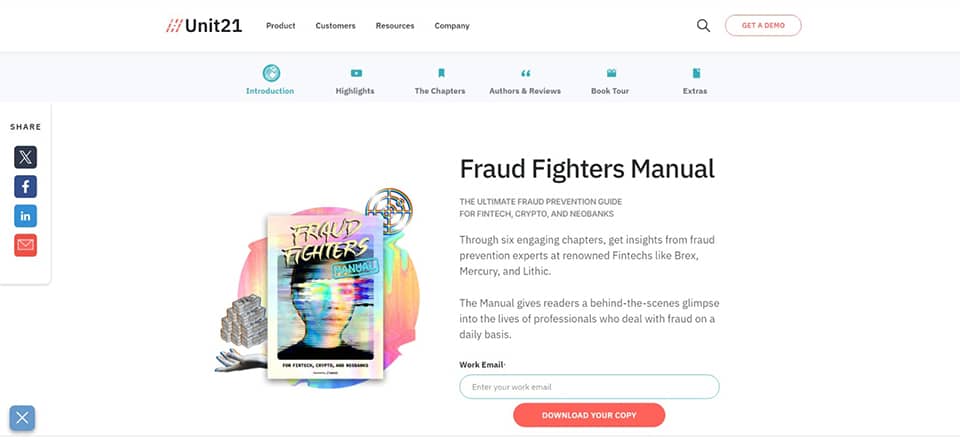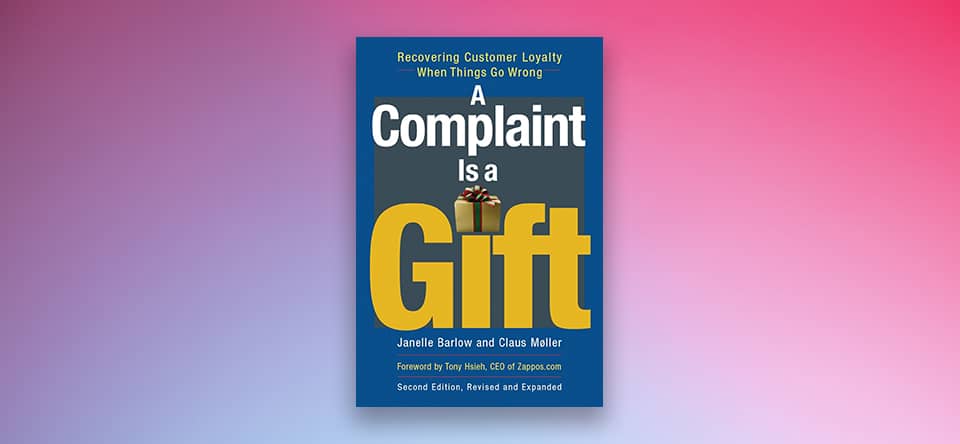Issue 022: How FinTech Startup Unit21 Generated Millions with a Printed Book, Non-Obvious Behaviors That Will Kill Your Startup, and More

February 12, 2025 | #022 | Free Version
Welcome to Startup Blitz, a weekly newsletter full of timeless ideas and insights you can use in your online business.
📕 How Unit21 generated millions with a printed book
👥 Why you should focus on building personal brands inside your company
💀 Non-obvious behaviors that will kill your startup
😡 How to handle upset and aggressive customers
Not subscribed? Learn more and sign up.
How FinTech Startup Unit21 Generated Millions with a Printed Book

Unit21 is a no-code platform for detecting and managing fraud. As part of their marketing strategy, they decided to create the Fraud Fighters Manual. It’s a comprehensive guide that equips fraud fighters with knowledge and strategies to combat fraud.
Unit21 partnered with content marketing agency Animalz to create the book. While using ebooks as lead magnets is common, few see the success Unit21 achieved.
So the Animalz team shared how they did it and how you can do the same:
Collaborate with Industry Experts to Boost Credibility & Reach
Unit21 interviewed experts from top FinTech companies and included their insights in the manual.
Featuring well-known fraud experts boosted the manual’s credibility and expanded its reach. Each contributor brought their own audience to whom they could later promote the finished book.
Make the Manual With Many Collaborators
The process started with an outline of key topics provided by Unit21. Then Animalz interviewed fraud fighters for 30-60 minutes on each topic.
Plan Distribution Meticulously
Unit21 used the interviewed experts’ networks to build hype for the book’s release. They asked each contributor to share a LinkedIn post teasing their writing, nudging followers to the landing page.
The LinkedIn posts drew thousands of click-throughs, translating into valuable leads for Unit21.
How Unit21 Used the Book as a Sales Tool
The popularity of the book positioned Unit21 as a thought leader in fraud prevention. Many were impressed that Unit21 had written a real book.
The sales team started using it to start conversations with prospects. They were even offering to hand-deliver printed copies. This personal touch worked. Four out of five prospects who received the book tried Unit21.
The demand for the book was so high that management had to limit how many copies the sales team could distribute.
Why You Should Focus on Building Personal Brands Inside Your Company

It’s not just about encouraging employees to be visible on social media. It’s about making them “personal brands first.”
Here’s why:
Look at TikTok. The top accounts aren’t cat videos. They’re real people posting personal contents.
Tesla spends $0 on advertising. Yet Elon Musk has over 50 million followers. His personal brand drives attention to Tesla.
Non-Obvious Behaviors That Will Kill Your Startup

Recently they shared some eye-opening insights about behaviours that can destroy startups. Here are a few key ones:
1. Waiting “One More Week” to Ship Something
2. Not Trusting Teammates
3. Giving Mostly Positive Feedback
Constantly giving positive feedback while avoiding constructive criticism is harmful. Constructive feedback, when given with good intent, drives improvement.
4. Not Following Up with Customers
5. Obsessing Over Competitors
Don’t ignore competitors, but don’t let them dictate your strategy. Focus on what makes sense for your users.
PostHog shares even more insights in their full article. Check it out to learn more about avoiding these common pitfalls.
📖 Book of the Week: A Complaint Is a Gift by Janelle Barlow

This week, I want to highlight A Complaint Is a Gift: Recovering Customer Loyalty When Things Go Wrong by Janelle Barlow.
“Once they start to become more rational, you can help move your customers to a more positive emotion. With anger, this means if you do not acknowledge their anger or somehow respond to it, they will probably just get angrier.”
Thanks for reading. I hope you have found at least some of these tips helpful.
Until next week!
You are receiving this email because you subscribed to Startup Newsletter. You can Unsubscribe from here.